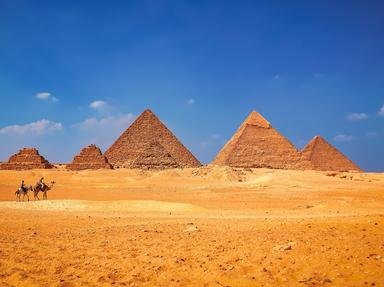Quiz Answer Key and Fun Facts
1. The term "hieroglyph" comes from two Greek words. What do they mean?
2. What is each symbol (or minimum unit) in the Egyptian system of writing called?
3. There is often a symbol placed at the end of a word which indicates its general meaning. What are these symbols called?
4. In Egyptian writing, nouns can either be masculine or feminine. What symbol is used to indicate a feminine noun?
5. Hieroglyphic was usually only carved into stones. Scribes using paper had a faster method of writing. What is this kind of writing called?
6. In what direction is Egyptian read?
7. When looking at a text, how do you determine from which end you should begin reading?
8. When did Egyptian become a dead language?
9. What is the rebus principle?
10. What important artifact helped Egyptologists to decipher hieroglyphic?
Source: Author
MrMistoffolees
This quiz was reviewed by FunTrivia editor
bloomsby before going online.
Any errors found in FunTrivia content are routinely corrected through our feedback system.

